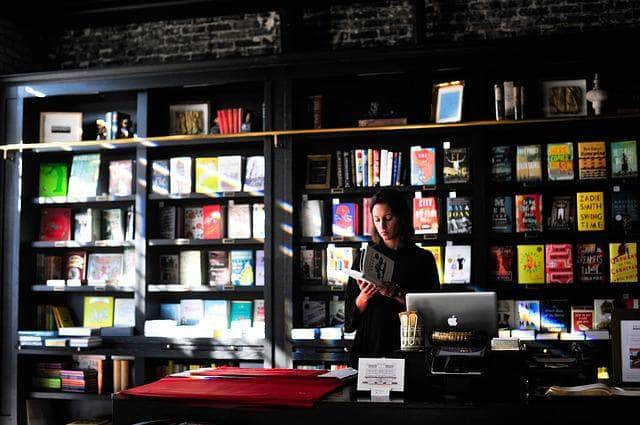How to Increase Revenue with Merchandising Panels
Article published on May 07, 2018
Next time you go shopping, look at where that store's merchandising panels are placed.
Did you see one to the right of the front entrance? That panel was placed there because customers are more likely to turn right than left when entering a store.
Were your eyes drawn to specific products on the retail panels? That wasn’t an accident.
A well organized merchandising system “forces” customers to look at the products the merchant wants them to with visual tricks and merchandising tactics.
It’s little psychological tricks like these that separate successful retail stores from stores that are about to go out of business.
Merchandising systems and point of purchase display - when designed well - can increase revenue and turn new customers into repeat buyers.
How do you implement a strong merchandising system strategy?
Visual merchandising is one part art and one part science. It will require some time and planning, but an effective merchandising system can become one of your most efficient and productive salespeople.
Not sure where to start? Keep reading.
This post will go over tried-and-true strategies for creating designing effective merchandising panels that catch your customer’s attention and lead them to make purchases.

Know Your Buyer Persona
Any successful business owner will tell you that knowing who your target customer is and marketing specifically to them will increase your revenue tenfold.
In order to know your target customer you need to create a “buyer persona”.
According to Hubspot, a world leader in marketing research, buyer personas are “fictional, generalized representations of your ideal customers.”
A detailed buyer persona can help you in many areas of your business - sales, marketing, product development, customer service, and yes, in creating merchandising systems.
Your buyer persona shouldn’t just have demographic information, it should also include their behaviors and psychographics: people’s attitudes, beliefs, wants, wishes, and psychological desires.
If you can figure out what your customers want and anticipate their needs then you can figure out what products they need to buy to help them attain those wants and needs.
Not sure where to get started? Look through some of your past receipts.
Are your customers the type of people who pick up a chapstick at checkout or are they more likely to indulge in a Milky Way Dark?
Marketing today is all about psychology, and merchandising panels are no exception. If you can figure out what add-ons your customers are most likely to buy, you can arrange your merchandising panels with those things in mind.
Make a Plan(ogram)
Once you’ve figured out your buyer persona, it’s time to decide…
- How many merchandising panels you’ll need
- Where you’ll place them
- Which products you’ll displaying
- The best ways to organize them
The best way to do this is with a planogram.
Planograms are diagrams that help you decide how and where products in your store should be placed.
Typically, they’re made using special software that allows you to input the dimensions of your store and fixtures to create a layout of your store.
With the software, you’ll be able to drag and drop products, arrange shelves to optimize product placement, and customize shelf placement and dimensions.
Quick note: you can also draw them on graph paper.
It won’t be as accurate as a digital planogram, but it will still help you visualize your merchandising panels before setting them up.

Pick a Theme
A lack of clarity in marketing is one of the biggest mistakes you can make as a retailer.
Think about the last email you received from an ecommerce business.
Ideally, that email should have focused on a product theme.
For example, an email from our business could be tailored around a specific product type, like 'Five Different Styles of Stanchion Posts' or 'Six Different Types of Belt Barriers'.
If an email is advertising too many products, the reader of the email becomes confused and doesn’t click to buy any of those products.
The same logic holds for merchandising panels. If there are too many different types of products on merchandising panel that don’t make logical sense together, customers will ignore the panel altogether.
Keep in mind things like color, products, and lighting when deciding on your merchandising panel’s theme.
Choose the Right Size Panels for Your Products and Your Space
Remember when we talked about knowing your customer’s psychology as a way to increase sales? The visuals of your store should be conscious of that as well.
A merchandising panel that is too big or too large for the dimensions of your store will look awkward and decrease the likelihood of increased sales.
Your merchandising systems should fit the space of your store and be cohesive with your design to encourage customers to buy.
Keep Merchandising Panels Clean and Simple
This sound like a no-brainer, but an overstuffed panel with products in every nook and cranny will be confusing to customers and discourage purchases.
Take the time and effort to make sure all of the items on your panel are organized, clearly visible, within the reach of your customers, and attractively displayed.
Avoid overcrowding and use signs with easy-to-see product information. Make sure your employees stay vigilant and keep the panels organized and neat.

Remember: Customers ALWAYS Turn Right When Entering a Store
The most common direction customers turn when entering a store is right (by a wide margin) so the right side wall of your store near the entrance offers you a prime merchandising opportunity.
In fact, the wall near the right-side entrance of your store is known as the “power wall” because products placed their have such an increased likelihood of sale.
Pick high cost, popular, appealing items for your merchandising panels on your power wall to maximize revenue.
Use Overhead Lighting and Spotlights to Draw the Eye
With the right lighting, you can guide your customer’s eyes towards different products.
Use spotlights or overhead lights to draw your customer’s eyes to merchandising panels and high-cost items.
Most customers won’t realize they’re being directed to a specific product, but they will be more likely to buy that product.
‘Show’ Your Customers What to Buy With Signs and Graphics
Even if you’ve come up with a great theme for your merchandising panel, lit it well, and kept it clean, there are still more opportunities to increase the chance of sale.
Use visually compelling signs and graphics to convince customers to buy.
Putting together in store merchandising systems is all about drawing the eye. That means you want customer’s eyes to naturally fall upon certain things in the hopes that they will purchase those items before leaving your store.
Visuals in large fonts that are branded, have contrasting colors, and describe the benefits of the products (not the features) are the most successful.

Update on a Regular Basis
It’s important to regularly update and refresh your floor displays, preferably on a weekly or biweekly basis.
When regular customers see the same items on retail panels each week they stop paying attentions to the items on those panels and the effectiveness of those merchandising panels dissipates.
Consider your buyer persona and seasonality when you’re refreshing retail panels.
For example, a clothing store might consider stocking their merchandising panels with swimwear accessories, like sunscreen or sunglasses, in the summer, and hats and gloves in the winter.
Be Consistent With the Look, Style, & Feel of the Rest of Your Store
One of the most important attributes of a successful retail business is branding.
The flooring, lighting choices, and overall design of your store should be consistent with your brand’s intended image. Your merchandising panels should be consistent as well.
Want to learn more about increasing revenue for your retail business? Read our posts on ADA Compliance for Retail Businesses and Retail Crowd Control Basics.


 Belt Barriers
Belt Barriers
 Barricades
Barricades
 Classic Stanchions and Ropes
Classic Stanchions and Ropes
 Wall Mounted Belt Barriers
Wall Mounted Belt Barriers
 Plastic Stanchion Posts and Chains
Plastic Stanchion Posts and Chains
 Signage
Signage
 Traffic Control
Traffic Control
 New Products
New Products
